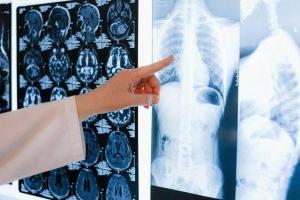When you purchase through links on our site, we may earn an affiliate commission. This doesn’t affect our editorial independence.
A groundbreaking deep-learning model has been developed to automate X-ray analysis for faster and more accurate assessments of spinal health.

This innovative technology has the potential to transform diagnostics for spinal conditions such as scoliosis and kyphosis, impacting millions of people worldwide.
The Challenge of Spinal Diagnostics
Traditional methods of spinal diagnostics, including X-ray measurements and visual assessments, can be time-consuming, inconsistent, and prone to errors. Existing AI models have struggled to accurately analyze complex spinal misalignment cases, particularly those involving atypical anatomy.
A Novel AI Approach
The new model, developed by researchers at ETH Zurich, utilizes a modified U-Net architecture to analyze radiographs (X-rays) and identify key spinal structures.
This AI architecture combines spatial details with its understanding of anatomical relationships, gathered through training on annotated datasets.
Accurate and Reliable Results
The model has demonstrated impressive accuracy and reliability in predicting spinal alignment measurements, even in challenging cases.
With a reliability score of 88% for predicting spinal curvature. The AI model has shown promise in streamlining clinical workflows and supporting doctors in diagnosing complex spinal conditions.
Future Developments and Applications
While the model requires further development to address limitations such as compromised segmentation accuracy in patients with medical implants, the researchers are optimistic about its potential.
Transforming Spinal Health Diagnostics
The integration of AI in spinal health diagnostics has the potential to revolutionize patient care. By automating X-ray analysis, doctors can save time, reduce diagnostic errors, and improve treatment plans for patients with spinal conditions.
As the technology continues to evolve, it is likely to have a profound impact on the field of spinal health diagnostics.







